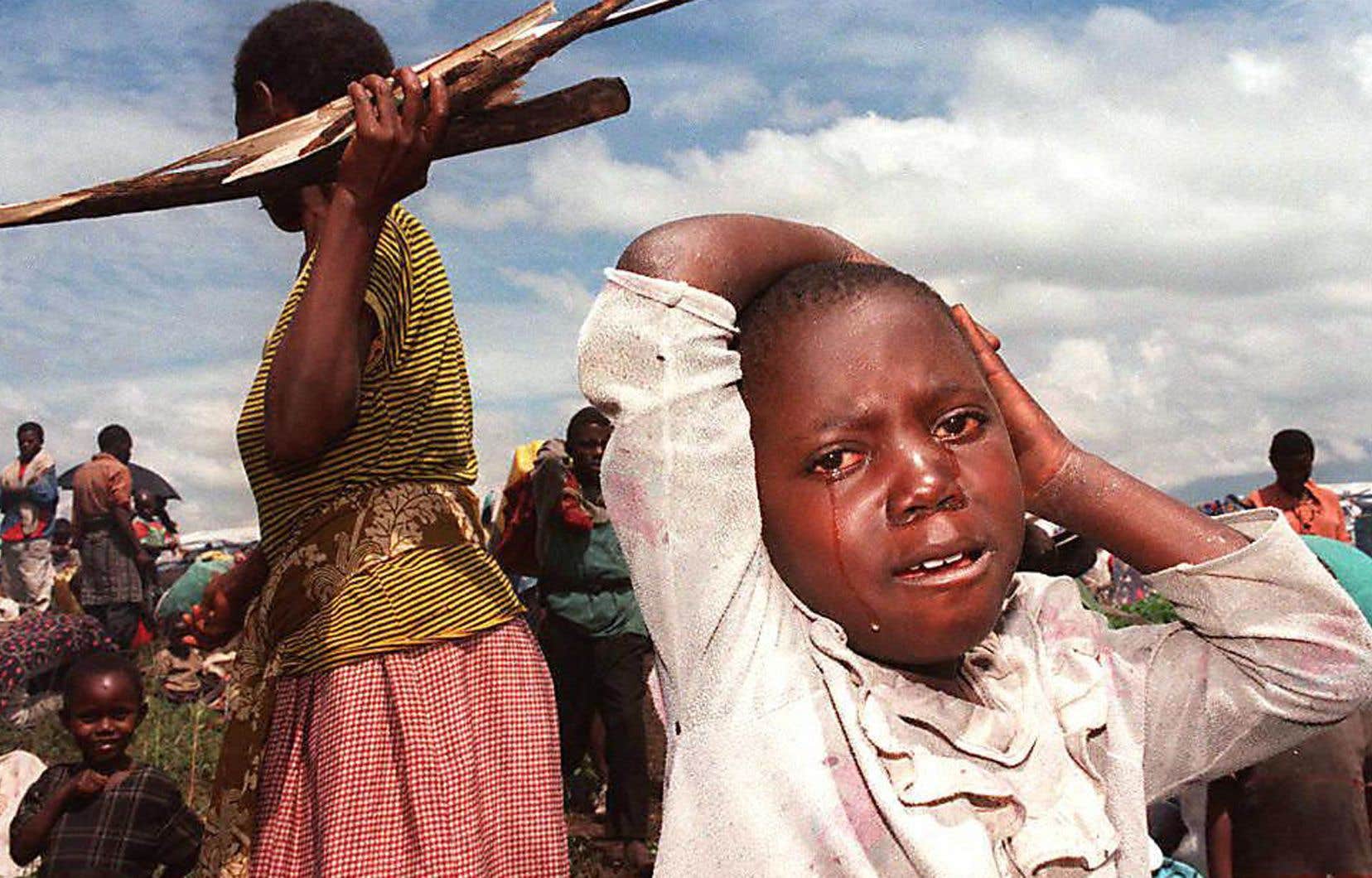“All human beings are born free and equal in dignity and rights. » It is with these simple but categorical words that the first article of the Universal Declaration of Human Rights opens, which is celebrating its 75th anniversary this year. Despite the wars, tortures and abuses of all kinds that have continued to decimate humanity since then, it remains “relevant and useful”, according to human rights experts, because it continues to embody the “ standard” on which everyone agreed.
Scarred by the horrors of World War II and the Holocaust, countries sought ways to avoid further atrocities.
The Declaration then sets an important milestone: for the first time, States – including former enemies on the battlefields – agreed on the rights which should benefit from universal protection and wrote them in black on blank in a single document. It thus prohibits slavery and torture, protects freedom of expression and the right to life, and provides for other, more atypical rights, such as the right to rest and leisure. She was described as “ Magna Carta international for all humanity.
Only three years after the creation of the UN and as the Cold War was taking shape, the Declaration was adopted in the form of a resolution by its General Assembly at the monumental Palais de Chaillot, in Paris, on December 10, 1948. It there were only 58 member states at the time: 48 voted for its adoption and 10 abstained in one way or another, including South Africa, which launched its policy of ‘apartheid.
Failure or success?
75 years later, the world is still fractured. Rape remains commonplace during armed conflicts, torture is used and starving children are crowded into refugee camps. Even Canada is not above reproach: it has been criticized by the UN on more than one occasion for its treatment of Indigenous people.
Has the Declaration failed in its promises of a better world?
Pointing out violations of human rights is not a good way to determine its effectiveness or relevance, the two experts consulted firmly said. “This is equivalent to saying that the Criminal Code in Canada does not work because people always commit crimes,” summarized Stéphane Beaulac, full professor at the University of Montreal, specialist in international fundamental rights law and counsel at Dentons LLP.
But if the rights set out therein are not all respected, the Declaration continues to represent “a common ideal to achieve”, accepted by all, underlines William Schabas, professor of international law at the University of Middlesex, in London, and human rights specialist. “It was true then, and it is still true today. » This is its strength: “It has retained all its relevance and usefulness. »
When the Human Rights Council decided to assess the level of respect for the rights and freedoms of UN member countries, it used the Declaration, which had the approval of States. “Here’s where it’s useful.” »
It is a “complete” document, adds Mr. Beaulac. Not only does it constitute “a catalog” of rights and freedoms, but it also provides “an overview” and articulates that fundamental rights are “a whole” and that they must be reconciled rather than hierarchized. In short, one right does not take precedence over another: the Declaration encourages us to find a balance when rights come into conflict.
In any case, it would be wrong to speak of failure, believe the two specialists. Mr. Schabas notes that quite a transformation has occurred over the past 75 years, from racial equality to women’s equality. Everything is not settled, obviously, but we can speak of “considerable progress”. He recalls that in 1948, almost all countries used the death penalty, including Canada. Today, there are fewer than 30, he notes.
The Declaration was also “a model or template” for many subsequent instruments, such as the European Convention on Human Rights, to name just one, said Mr. Beaulac. And then, its principles accepted by all make it possible to call to order the States which flout fundamental rights, as was the case during the American intervention in Iraq in 2003.
The Declaration in figures
Without coercive mechanism
One of the criticisms frequently heard is that the Declaration does not contain any mechanism to ensure compliance, as is the case with treaties. Why not choose this path?
It would have taken longer, and countries wanted to deliver a document quickly in the post-war period, explains Mr. Beaulac. In short, in 1948, we said to ourselves: it was better to stick with a Declaration to have greater support, more quickly. It ultimately took nearly 20 years to finalize the two binding UN pacts.
And then, several of the principles of the Declaration – the prohibition of torture, for example – are now part of customary international law, that is to say, that which is made up of rules resulting from a “general practice accepted as being the right. The latter is even “stronger”, because it binds all States, which cannot make small exceptions as they do in treaties, explained years later John Humphrey, the drafter of the first draft of the Declaration. .
It is useful here, even today: it is frequently cited by Canadian courts to help interpret and apply the human rights provided for in our laws, said Mr. Beaulac. The Supreme Court judges very recently referred to it in the case of comedian Mike Ward.
If this founding instrument was praised at the time of its adoption for being free of any reference to religion and political ideologies, it would later be criticized by some who considered the influence of Christian and Western values too predominant.
Mr. Schabas also notes that the grounds for discrimination set out in 1948 do not include all those considered important today, noting the absence of sexual orientation, disability and age. Except that the Declaration leaves the door open to an interpretation that includes them: “a good thing” for the future, judges the professor.
